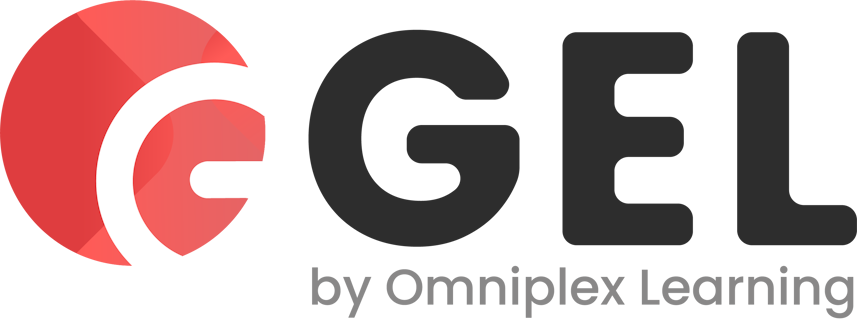TOGAF® Standard
Much like how an architect knows a building inside and out, enterprise architecture frameworks are designed to help users outline the structure and essential business processes of an ‘enterprise’. This level of awareness has become a key asset in the last few decades, with effective change management requiring organizations to have a holistic perspective of themselves. Not only can this help them to avoid wasting resources, but it can also ensure that desired architectural changes are completed without delay – a vital perk in the increasingly competitive landscape of modern business.
In short, in order to get your organization to where you want it to be, you first need an idea of where it currently is and what you have to work with. Using these assets, you can create a clear roadmap – one which takes all associated assets, goals, risks and perspectives into account in order to bring about the new architecture as efficiently as possible.
The TOGAF® standard is one of the world’s most popular EA frameworks. It provides users with a proven methodology and set of tools for enabling quick, efficient and virtually risk-free development. TOGAF enterprise architects are experts in maintaining a focus on business goals and IT capabilities, all while juggling the expectations and requirements of multiple departments.
While TOGAF is by no means the only game in town, it is certainly one of the most well-established. Continuous development and updates have kept the framework relevant, even as businesses and technology continue to evolve. There are currently over 50,000 certified professionals practicing the TOGAF standard, with companies like IKEA and Chevron all benefitting from the framework.
Of course, to those unfamiliar with enterprise architecture, it can be easy to get lost in corporate jargon. How relevant are TOGAF advantages once you get down to brass tacks, and are they worth the effort, given standard TOGAF costs?
Are you looking for ways to convince key decision-makers in your organization to invest in TOGAF training courses? Here are the most important points you’ll need to cover!
How can a TOGAF Certification Help my Business?
TOGAF is general enough that it can be applied to businesses and organizations of any size, type or industry. At the same time, it is not quite a cheat sheet; rather, it is a set of guidelines and best practices which can be easily adapted to suit individual users.
These guidelines offer a number of significant benefits:
Enabling quick and efficient changes
Following an enterprise architecture framework is all about enabling large scale organizational changes swiftly, cost-effectively and with as few errors as possible. Within a large company, decision-makers need to constantly juggle various expectations and requirements, a process which can become easily dragged out as clear EA targets become diluted with less relevant priorities.
The TOGAF framework helps practitioners to organize resources and create targeted roadmaps. In following the Architecture Development Method (ADM), a user can gain a solid understanding of the current state of their architecture, what they want it to look like in the future and what they have to work with in order to reach this goal. TOGAF also offers guidance on managing the expectations of different departments, not only to keep work targeted but also to ensure that EA development gets the support that it needs.
Keep in mind that TOGAF has been updated a number of times over the years, keeping the framework relevant even in the ever-changing worlds of business and technology. As such, it remains comprehensive, helping practitioners to enable EA development without leaving anything to chance. Better yet, as an organization continues to use TOGAF it can also learn to adapt the framework, creating a bespoke version that will enable even greater efficiency in future projects.
Proven methodology
TOGAF is currently used by some of the world’s largest organizations, including the UK Department of Social Security, Westpac and even NATO. Why? Because it’s a framework that gets results, and there is no shortage of case studies to attest to this.
An important thing to remember is that while the TOGAF framework and ADM are fairly comprehensive, they are also general enough to be used by any organization regardless of size, sector, industry or location. Globalization, as well as the rise of the Digital Age, has made TOGAF’s tools and advice almost universally relevant.
If you really want to convince your organization to invest in TOGAF, start looking for examples of its use in your own industry. You may even find that your competitors have already adopted the framework.
Budget-friendly
By using TOGAF, organizations can save a great deal in terms of time, money and other resources. Even better, becoming certified in TOGAF need not break the bank!
TOGAF certifications come in two parts: TOGAF Foundation (Level 1) and TOGAF Practitioner (Level 2). The Foundation modules introduce students to the different elements of TOGAF and how they are applied. In studying the Practitioner modules, students can learn to adapt and apply the framework in practice. Students must pass both levels in order to become TOGAF practitioners, but even the knowledge gained at Foundation level can be highly useful in pursuing EA development.
An important thing to keep in mind if you are worried about the initial costs of becoming certified is that TOGAF certifications remain relevant and valid even as the framework itself is updated. If a new version comes out, practitioners do not have to pay to retake their exams in order to remain certified. It is also worth remembering that with digital TOGAF courses (as opposed to traditional training), students can enjoy months of access, allowing them to learn at a pace that will not disrupt their jobs.
Market reputation and common language
TOGAF has been setting the standard for enterprise architecture for decades. The Open Group even claims that, as of 2016, over 80% of Global 50 companies utilize the framework, as well as 60% of Fortune 500 companies.
It could be said that gaining a TOGAF certification can help with an organization’s market reputation. However, the more important takeaway from this is realizing just how widespread knowledge of TOGAF actually is. Not only can its shared terminology create networking opportunities for practitioners, it can also ease synergy and cooperation between different departments and companies.
Portfolio rationalization
Technology is an inextricable part of modern business. One of the biggest advantages of enterprise architecture is that it gives key decision makers a clear picture of where IT fits in with their organization and goals; something that many less technically-minded executives often struggle with.
The ability to create technological frameworks makes it easier to see where fat can be trimmed in enterprise architecture development, reducing costs and boosting efficiency. It can also help to create a more lightweight IT structure for day-to-day operations, not only helping to save even more money in the long term but also leaving practitioners with an architecture which will be far easier to update and improve later on.
No prerequisites
When learning TOGAF, it helps to have at least a basic understanding of enterprise architecture governance, but this is not an exact requirement. Indeed, anybody can start learning TOGAF, and you could even treat it as a first step into a career as an enterprise architect.
There is certainly a lot to say about studying TOGAF while working a full-time job. Students can use their own organization as an example, allowing them to develop an understanding of how to start benefiting said organization even before they take their exams.

